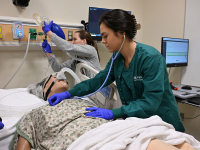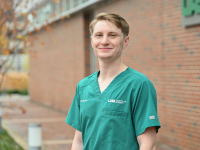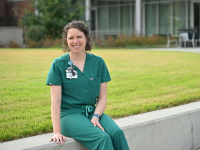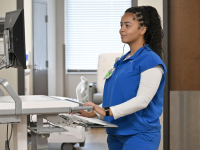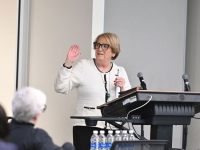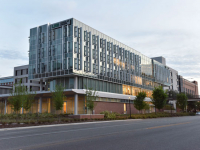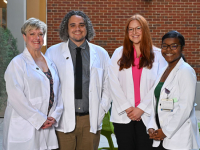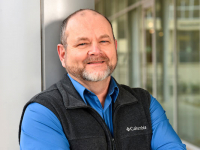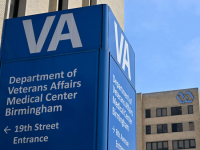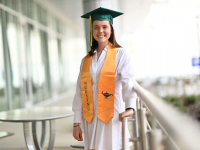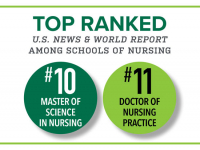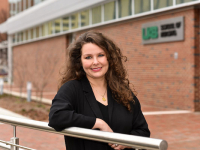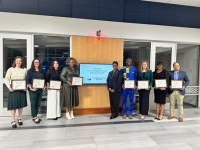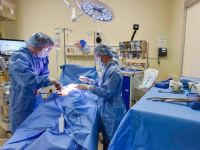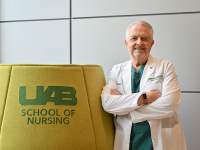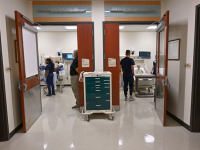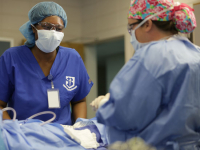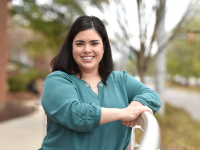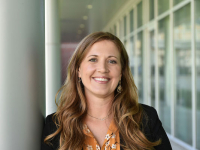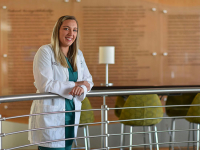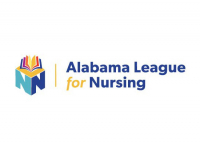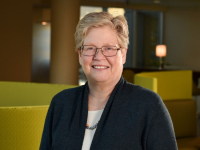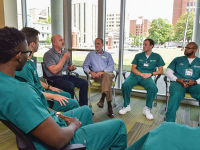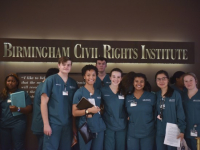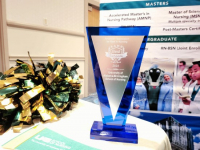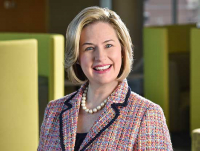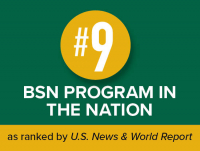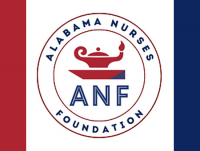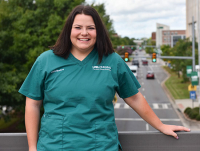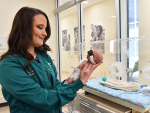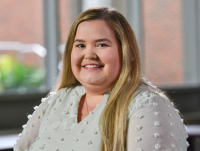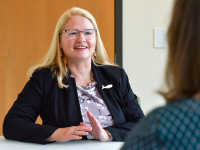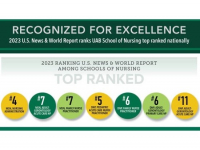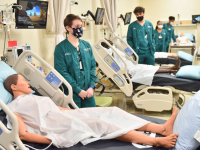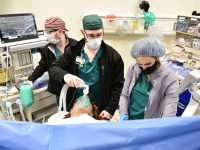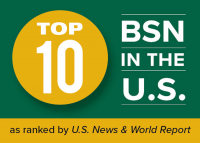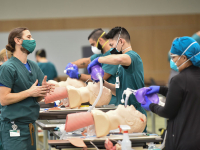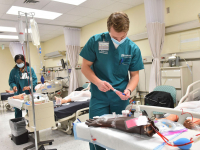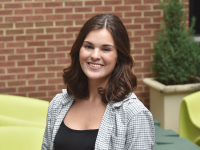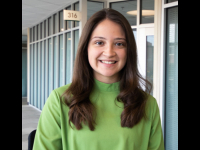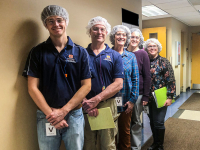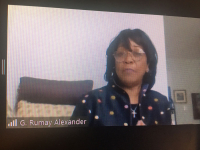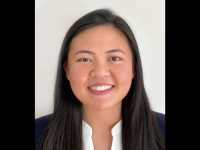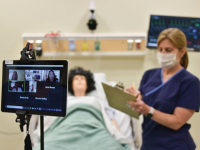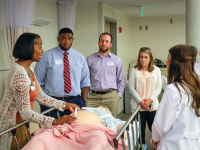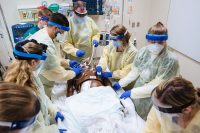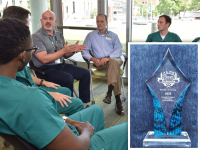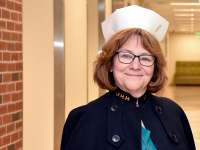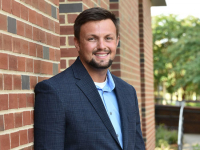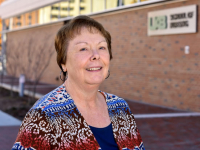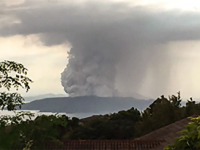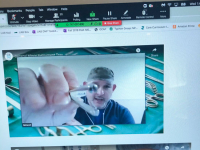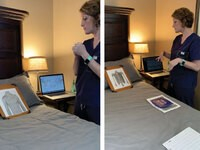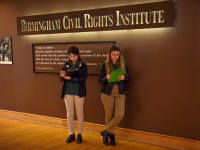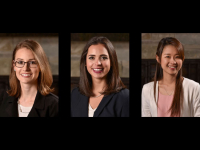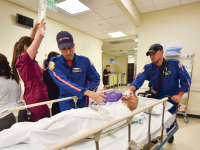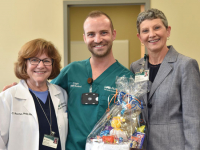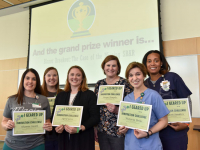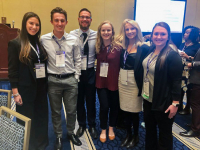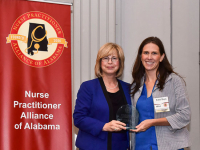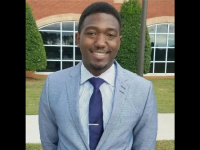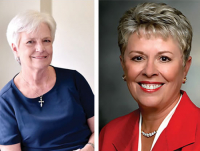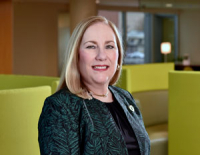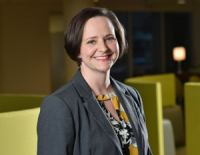By Erica Techo
As the nation faces a critical nursing shortage across all specialties, Certified Registered Nurse Anesthetists are no exception. The University of Alabama at Birmingham School of Nursing has grown and tailored its DNP Pathway for Nurse Anesthesia to help meet workforce needs and reflect the crucial role CRNAs play in providing care to all communities, especially in rural and under resourced areas.

Since transitioning from a master's program to a doctoral program in 2017, the School has seen a steady climb in its Nurse Anesthesia DNP's cohort size—rising from 29 students in 2015 to 53 in the incoming Summer 2022 cohort.
“We've been increasing the size of our program to help meet the increased workforce need in Alabama and in contiguous states,” said Associate Professor and Nurse Anesthesia Pathway Director Susan McMullan, PhD, CRNA, CNE, CHSE. “Most of our students are going to areas that are medically underserved, combatting shortages and meeting the state's needs for CRNAs.”
Throughout the program, students rotate at multiple clinical sites across the state in Birmingham, Montgomery, Tuscaloosa, Florence, Huntsville, Dothan and Mobile as well as Jackson, Mississippi. They gain experience, network with practicing nurse anesthetists and receive insight into practice excellence at each site. Many of the graduates go on to accept positions at one of their clinical sites.
“The goal is for students to stay where they train in order to help combat shortages,” McMullan said. “Each of our sites has been able to hire at least one of our graduates, and that is important. These locations and their hospital systems benefit from having CRNAs who already have experience within their hospital system. Because students are at clinical sites the last several months of their program, once they graduate and are hired full-time, they are able to hit the ground running.”
Such is the case at UAB Hospital, part of UAB Medicine, one the nation's largest health systems, and one of the School's on-campus partners through the UAB Nursing Partnership. Upcoming graduate Drew Nolen had four clinical rotations at UAB Hospital, which he said provided further insight into the nurse anesthesia role and led to valuable experiences with different patient populations, units and more.
“Getting to work at UAB showed me the different level of acuity and autonomy I could experience,” said Nolen, who will start a job at UAB Hospital post-graduation. “Being able to rotate through clinical experiences at UAB prepares you to work anywhere. All of the staff are really supportive of students, and you are able to work with many different people and see different approaches. I think the reason I accepted a position at UAB is looking forward into the future. I don't think there is a better facility or hospital to work at, to set yourself up for success in practice.”
Nolen is not the only student joining the staff of UAB Hospital. Of 23 CRNA vacancies at UAB Hospital, 15 will be filled by UABSON graduates, a ratio that shows the strength of the partnership between UABSON and UAB Medicine.
“We have had an increased collaboration between our program and UAB Hospital's Nurse Anesthesiology to help in the hiring of our graduates,” McMullan said. “Graduates are taking jobs not only at UAB main hospital, but also at the UAB Cardiovascular Institute and UAB Highlands. We're glad that UAB can count on our graduates to fill those spots and train them in a way to fit the hospital's needs.”
Preparing for the future
In addition to hands-on, clinical practicum experiences, the well-rounded Nurse Anesthesia curriculum is designed to provide students with skill sets that will be needed as a leader in the clinical practice setting, including skills in quality improvement and evidence-based practice. As part pf the Doctor of Nursing Practice pathway, students complete a quality improvement project, oftentimes at their clinical site, that allows for students and faculty to collaborate with clinical partners to find solutions and next steps in challenges faced in practice.
“The students spend a tremendous amount of time on these projects, in addition to their clinical nurse anesthesia training,” McMullan said. “The projects are really well received by the clinical sites, as we are able to work closely with the students and our partners as doctorally prepared faculty to help tackle challenges and implement solutions. It's a win-win for education and practice.”
As it looks to meet workforce needs in the future, the UAB School of Nursing is also part of the Leadership Excel and Achievement Program (LEAP) certificate pathway, a pilot program designed to optimize the diversity of the nurse anesthesia workforce. After completing the LEAP pathway, two certificate recipients will join the UAB School of Nursing DNP Pathway for Nurse Anesthesia in the Summer 2022 semester cohort.
“The most important thing is that we recognize that we have to have a diverse nurse anesthesia profession because our CRNAs serve a diverse population,” McMullan said. “I'm excited about the LEAP program because it's the first program that is focused on supporting minority student success in admission to nurse anesthesia programs. Another existing program teaches students about nurse anesthesia, which is excellent, but this sets up a pathway so students are accepted into schools upon completion.”
Dynamic faculty
The program is also strengthened by faculty who bring a well-balanced variety of experience to the classroom, enabling students to learn from and view nurse anesthesia through different lenses and perspectives. Elements of clinical practice experience from across the state and country, grant funding from the National Institutes of Health, peer-reviewed publications in various professional journals, and awards and recognition from national organizations come together to create a dynamic program.
“Our students are taught by faculty from diverse backgrounds, meaning they really learn from the best. We all provide examples from our viewpoints, from our own experiences and from our perspectives, whether it is research, clinical experience and/or years in the field,” McMullan said. “Our faculty have a mix of research and clinical expertise which provides a strong background for mentoring students in completion of their DNP projects.”
For upcoming graduate Drew Nolen, a wide range of faculty experience enhanced the Nurse Anesthesia DNP Pathway.
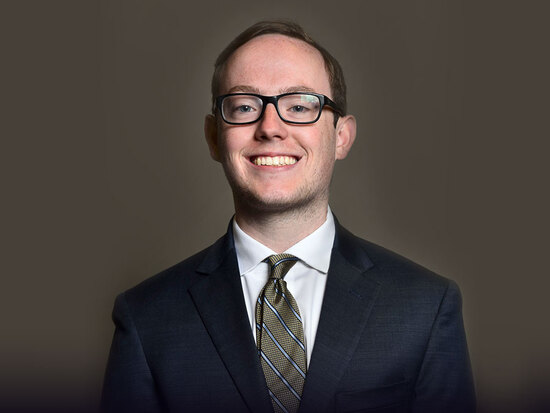
“Having such unique faculty in terms of involvement and background gives us opportunities that other programs don't have,” Nolen said. “For example, our didactic faculty supported our DNP projects over the course of the program. Other faculty, including those preceptors in clinical practice, offer support at clinical sites. As a student, you have good days and bad days, but the NA faculty are always there to help us learn, help us cope and help us improve.”
“Each of us are assigned to different positions in our program where our expertise can better facilitate the educational and clinical activities to magnify the students' learning,” added Assistant Professor Bryan Wilbanks, PhD, DNP, FAANA (DNP 2012, PhD 2016). “Our program would not be as successful as it is without the faculty's diverse experiences. I believe our students benefit greatly from seeing how the DNP and PhD backgrounds are complementary in advancing patient safety and outcomes than when used alone.”
All of the faculty bring to the table research, publication and practice experience. For example:
- Pathways Director Susan McMullan is actively involved in professional organizations, serving on the National Board of Certification and Recertification of Nurse Anesthetists Board of Directors, and she has received more than $50,000 in research funding from AANA. She has been awarded more than $500,000 in Nurse Anesthesia Traineeship Health Resources and Services Administration grant funding since her arrival to UAB in 2015. In 2021, she was named the recipient of the Alabama Association of Nurse Anesthetists Award for Outstanding Advocacy and Service to the CRNA Profession.
- Assistant Professor, Assistant Program Director and alumna Amy Yerdon, DNP, CRNA, (MSN 2011), graduated from the UABSON Nurse Anesthesia Program in 2011. She has spent her spent her anesthesia career at Huntsville Hospital, a level 1 trauma center and regional referral center for north Alabama and southern Tennessee. Since joining the School of Nursing, she has continued her clinical faculty practice at Huntsville Hospital and has a special interest in clinical preceptor training and enhancing the utilization of multimodal analgesia, which combines various groups of medications for pain relief and enhanced recovery after surgery protocols.
- Assistant Professor Edwin Aroke, PhD, CRNA, FAAN, has been nationally recognized for his research and scholarship regarding epigenetics and chronic lower back pain. Through a $1.7 million R01 grant, Aroke seeks to fill gaps in knowledge and improve practice. He was named 2021 Researcher of the Year by the American Association of Nurse Anesthetists Foundation and serves as president of the Association of Cameroonian Nurse Anesthetists in America.
- Assistant Professor Bryan Wilbanks, PhD, DNP, CRNA, FAANA (DNP 2012, PhD 2016) was recently named to the AANA foundation board and is an inaugural AANA Fellow, a reflection of his contributions to clinical practice, education, research and professional advocacy. Through multiple grants and awards, Wilbanks continues his research on nurse anesthesia care and its impact on patient safety and outcomes.
- Assistant Professor Ken Taylor, DNP, CRNA, recently obtained his certification in medical quality (CMQ) from the American Board of Medical Quality. This distinction is held by around 500 providers. His primary passions are neuraxial anesthesia and optimizing perioperative general anesthetic care, and each year he accompanies the Robinson Foundation to Coyoles, Honduras as they provide cleft lip and cleft palate repair to the underserved population.
- Adjunct Professor Joseph Pellegrini, PhD, CRNA, FAAN, recently joined the UABSON faculty. His previous roles include director of the University of Maryland School of Nursing's Nurse Anesthesia Program and director of clinical and academic research in the Georgetown University Navy Nurse Anesthesia Program. He has more than 30 years of clinical practice experience in nurse anesthesia and serves as the AANA Practice Committee Chair.
- Instructor Katie Woodfin, MSN, CRNA (MSN 2014), is completing the DNP Program with an anticipated graduation date of April 2022. She graduated with her BSN from Auburn University and MSN in Anesthesia from UAB. Woodfin joined the UAB NA faculty in 2015 and teaches basic principles of anesthesia and simulation. She also works to coordinate critical clinical placements for students.
- Instructor Ryan Richey, MNA, CRNA (MNA 2005), is completing the DNP Program with an anticipated graduation date of April 2022. Richey graduated from Auburn University in 2001 with his BSN and completed his MNA at the UAB School of Nursing in 2005. In 2018 Ryan joined the UAB NA program, and he currently serves as Coordinator of Simulation and Clinical Site placement.
As a faculty member, Wilbanks also aims to lead by example. This includes remaining involved in state and national organizations while encouraging students to do the same.
“My service with the AANA Foundation has included designing and implementing multiple studies aimed at improving perioperative patient outcomes through clinical care and design of electronic health records. I also have several years' experience in the Alabama Association of Nurse Anesthetists,” Wilbanks said. “I believe these activities provide opportunities to mentor our students and to serve as a role model. We also get students involved in our state association, which provides first-hand experience on how things are done, and we encourage students to become more active in legislative and leadership roles to help support our profession.”

